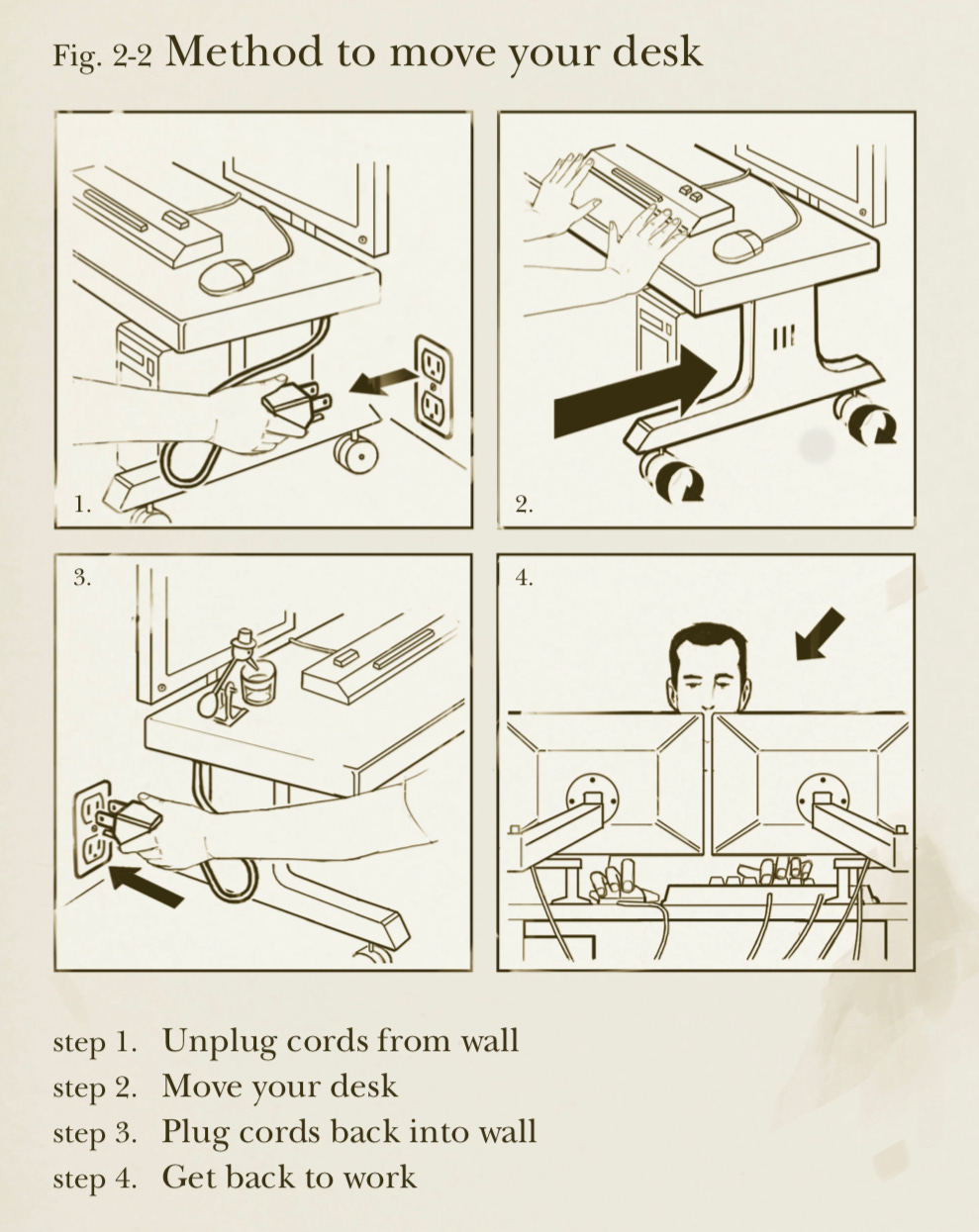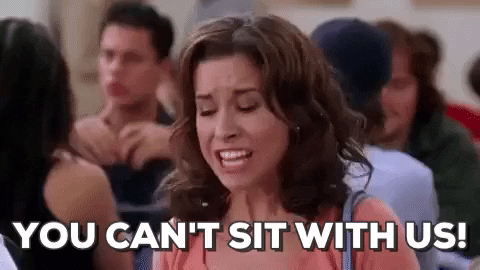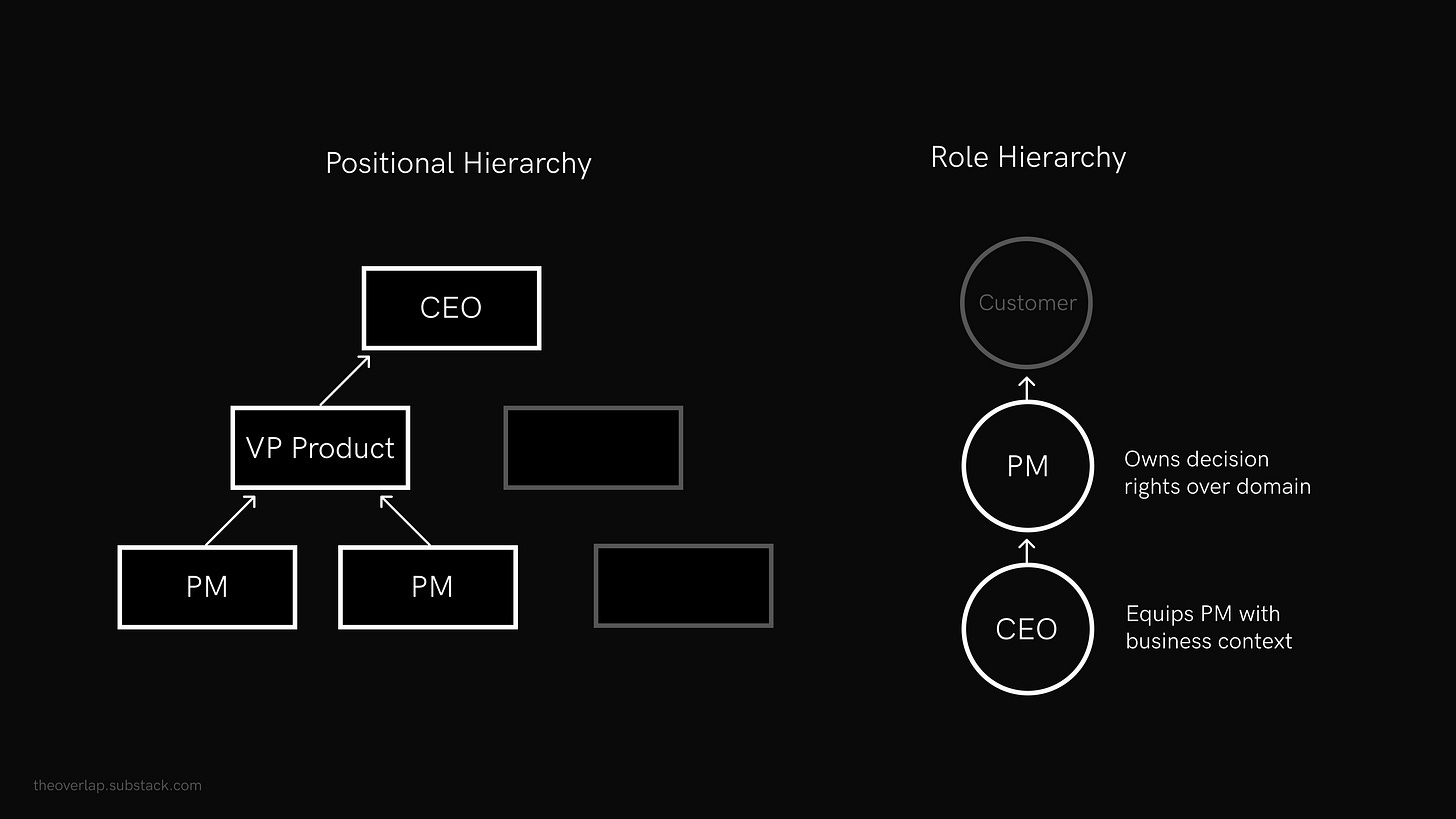Imagine a company where everyone is equal and managers don’t exist. A place where employees sit where they want, choose what to work on and decide each other’s pay. Then, once a year, everyone goes on holiday together.
You have just imagined Valve.
–Leo Kelion in Valve: How going boss-free empowered the games-maker
Valve, arguably the world’s most powerful gaming company, does not have managers.
Their handbook denounces traditional company hierarchy. If you work at Valve, you choose the project you want to work on. Just move your desk (or 8-bit character during Covid) to the team you want to work with. No need to ask a manager for approval.
Let me guess. You’re thinking, “That’s great for Valve. But a structure with no managers can’t work at other companies.”
Two things.
First, I agree that a completely flat structure won’t work for every company. Valve is a video game company. They distribute a lot of games—possibly up to 80% of all PC games [1]. A company that makes and distributes loads of video games needs an adaptive structure.
Second, there is a dark side to their flat structure. Their power structure is... savage.
The shadow side of self-management
While Valve says that everyone has decision-making authority, many former employees say that only certain groups hold that authority. From a glassdoor review:
"In order to succeed at Valve, you need to belong to the group that has more decisional power and, even when you succeed temporarily, be certain that you have an expiration date. No matter how hard you work, no matter how original and productive you are, if your bosses and the people who count don't like you, you will be fired soon or you will be managed out."
Find a group that has more decision-making power? Feeling like you’re going to get kicked out of your group? Sounds like high school.
That’s exactly what former Valve employee Jeri Ellsworth, shared in 2013:
"There are popular kids that have acquired power in the company, then there's the trouble makers, and everyone in between."
Yikes.
Self-management does not eliminate power dynamics
Here’s what Valve failed to understand: a completely flat company does not make power magically disappear. Without explicit ways of being with power, power becomes its own parasite, insidiously turning well-intentioned people into oppressive animals.
Power dynamics will always exist among groups of people. We’ve organized in hierarchies since the dawn of our species. We operate as squads by default. Power gets us humans to get things done at scale.
Power can’t be absent in any group of people—work teams and friend groups alike. Eliminating power from groups is like getting rid of weeds in your garden: they’ll keep regrowing no matter how many times you tried to get rid of it.
Since we can’t get rid of power, we should instead develop a healthy relationship with it. To develop a healthy relationship with power:
Acknowledge that politics, agendas, secrecy, and exclusion can exist, even among groups with the best intentions
Be aware of when power propels us toward our collective goals
Be honest when power gets in the way of our collective goals
These three things help you become more power literate: knowing how to be with power and use it for good.
Role hierarchy over positional hierarchy
Like any good org designer, you recognize the value of distributing authority. More voices shaping the strategy, less dependence on specific individuals/teams, and everyone feeling empowered. Who doesn’t want those things?
You want your company to distribute more authority, but you don’t want to implement a framework like Holacracy or Sociocracy. It’s just hard to implement without having been in a Holacratic/Sociocratic org.
To distribute authority without going full out on self-management, learn to separate role hierarchy from positional hierarchy.
If this sounds abstract to you, here’s a made-up example.
Say you’re the CEO of Spotify. You’ve heard tons of complaints from independent artists. Lots of them want to be able to directly upload music to the platform instead of having to go through Spotify’s distribution partners.
You just hired your first product manager to own this problem space and advocate for the needs of independent artists. This product manager used to work at Soundcloud—a music platform for indie artists—and is also a rapper who is not signed with a record label.
The PM interviews indie artists and shares their findings with you:
Of our indie artists, most rappers are frustrated with having to upload their music through Spotify’s distribution partners. They often miss their album drop dates because distribution partners take a long time to get back to them—sometimes up to 8 weeks. When distribution partners do get back to rappers, they come back with tons of demanding requests, such as removing a certain sample of a song in their music to avoid copyright infringement. Rappers hate removing samples from a song they already produced because that ruins the song altogether.
I suggest we talk to our distribution partners to share these concerns and figure out a solution with them.
Now back to positional hierarchy versus role hierarchy.
If you go off of positional hierarchy, you as the CEO will make the call yourself.
“Hm. Thank you for that. I’m hesitant to work on this with our distribution partners—they’ve been really difficult to work with in the past. But I’ll think about that and let you know my decision.”
If you go off of role hierarchy, you understand that the PM’s role is to best serve the customer, and your role is to support them. You trust the PM’s experience because they understand independent rappers more than you do.
“Sounds good. DistroKid would be the distribution partner we should talk to first, I’ve worked with them on a similar issue in the past. Want to schedule a meeting with them?”
Role hierarchy means you offering the PM your support, relationships, and resources so that they can do their job effectively.
Everyone holds roles based on their earned expertise. In this case, the PM is holding the role of “indie artist expert.” That means you should seek guidance from them on any problem related to indie artists. Especially if you’re the CEO—it sets a good example.
By separating role hierarchy from positional hierarchy, we get the fluidity that self-management enables without the high school drama.
Self-management still requires structure
My previous company was fully self-organized. My current company practices autonomous ways of working. Both of these experiences remind me that self-management is not the absence of structure.
It’s about designing a different kind of structure. A structure that prioritizes the work over individual agendas. A structure that governs its own constraints and agreements. A structure that is thoughtfully considered rather than accepted as status quo:
As we’ve grown, we’ve tried to be careful about the structures we put in place. A lot of companies seem to naturally—almost mimetically—adopt a fairly “normal” hierarchy: product managers, engineers, designers, project managers, etc.
–Patrick Collision’s Quora answer in 2012 to Does Stripe have product managers?
Organizations still need ways to hire, fire, compensate, reward, and resolve interpersonal conflict. At both companies I worked at, we came up with agreements on each of these areas that align with our principles of transparency, fairness, and people being inherently good. And we adjusted those agreements when we discovered ways to make them better.
Flat organizations need boundaries, constraints, and agreements. Without an explicit structure, we are building a house without any scaffolding.

Whether you work at a flat company or a traditionally structured one, power will always exist. Learn to be with it, aim to distribute it, and challenge it when it’s getting in the way. Encourage everyone to separate their roles from their title. And be okay with structure, guidelines, and yes, politics. But when structure, guidelines, and politics get in the way of your org achieving its purpose, change it.
What I’m Reading/Listening To
1. Interview with Niko Canner & Patrick O’Shaughnessy.
This interview was the inspiration behind this edition. Specifically Niko’s bit on 25:22:
The kernel of the literature on self-management that is very practical—even when I throw out other aspects of the literature—is that decoupling role hierarchy from positional hierarchy is useful.
2. Finite Games, Infinite Games.
I love this quote:
Finite players play within boundaries; infinite players play with boundaries.
Adaptive organizations play with boundaries. They think of business as an infinite game rather than a finite game.
3. Software teams are like executive teams.
I’m wary of the “product teams are the executive team of their customer” saying, but product teams must have decision making authority over their domain.
4. Thoughts on Conway’s Law and the software stack.
I really like the advice Lea Kissner gave: “take the long view, not just the broad view.” We should do this more often when building systems.
See you in two weeks,
–tim
Appendix
[1] If you know the exact % of PC games digitally distributed by Valve, leave me a comment below!
First image found from this are.na block.







I'm curious what your thoughts are on maintaining organization in student clubs. In a way they're just a company on a shorter timeline - resulting in faster turnover. How would you optimize for both 'forward momentum' while also creating systems that retain the institution's knowledge for newcomers.